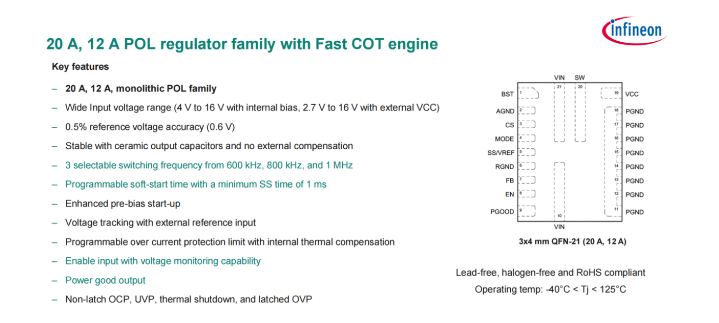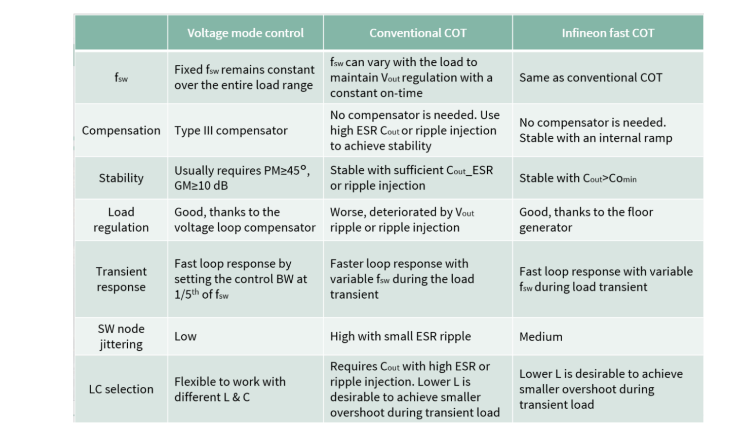
For today's hot artificial intelligence, computing power and algorithms are key, but the power system is equally important, and its innovation will also affect the development of the artificial intelligence industry. Dong Wei, application management manager of Power and Sensing Systems Division of Infineon Technologies Greater China, said that two or three years ago, acceleration cards were based on PCI-E as the mainstream for reasoning and budgeting, but in the past one or two years, with the concept of AI exploding and training large models becoming the mainstream, OAM shipments exploded.
While the human brain consumes only 20-30 W of power, AI chips consume a huge amount of power. Nvidia's DX1 GPU supercomputer contains eight P100 Gpus, each capable of 21.2 TeraFLOP of processing power, while reaching a total power of 3200 W, and requires multiple DXones in parallel to form an effective neural network.

In addition, the size of the NVIDIA OAM card is less than half a sheet of A4 paper, but the power can reach 700W or more, which requires an exponential increase in power density, and the power density is supported by power technology. On such GPU boards, the amount of DC-DC-related chips will exceed 60, which is 1.5 times that of the CPU motherboard of the server. "These products not only occupy a large board area, and the overall impact on efficiency, the impact on the performance of the main chip is great, if the AI chip wants to play the highest efficiency, the surrounding power supply must be very important." Dong said. "The data center outage could also be caused by power problems."
Power supply challenges
For servers, 5G and other applications, processors consume more and more power, and power supply design is also facing multiple challenges. First of all, efficiency is one of the biggest challenges, not only because of rising energy costs, but also, as losses increase, additional data center investment in cooling will increase, which will further increase operating costs and carbon footprint.
In addition, power density is also a special attention, because the data center processing unit size is getting larger and larger, the need to reduce real estate costs are also rising, and because the data center contains hundreds or thousands of processing units, so a single area to achieve more functions and higher power density, can greatly save the cost of land, but the more compact means that the more difficult to do heat dissipation.
Therefore, both efficiency and power density will affect thermal management, and heat dissipation has become one of the major challenges of infrastructure design.
AI's computing system is a complex load, on the one hand, with the advancement of semiconductor process technology, processors need more rigorous voltage accuracy and lower operating voltage, designers have to consider DC, AC and ripple changes in the entire operating temperature range. In addition, because the processor is not working at full capacity all the time, the load distribution can change from time to time, and the transient performance of the power supply needs to be considered.
Infineon offers a complete and broad product portfolio for technical facilities, including digital controllers, power stages, integrated power management ics, point of load (POL) converters, drivers, power modules and discrete MOSFETs.
Dong said: "From the past controller and MOSFET discrete scheme to later integration, to provide high-power digital controllers and power stages, as well as the current module and vertical power supply mode, this is to meet the challenges brought by AI applications."
Infineon introduces a new generation of POL
Infineon's recently launched new generation POL TDA388xx series is an effort to meet the challenges of power supply design. POL, that is, point-of-load (power supply next to the Load), generally we will put the load Point power supply as close as possible to the load, so as to maximize the power supply efficiency and accuracy.
Dong Wei said that the latest TDA388xx 12A and 20A products use a single wafer process, which is mainly cost-effective. However, in high-current applications, the multi-wafer approach is still used. Using Infineon's proven OptiMOS n-channel power MOSFET technology, the TDA38xxx series is designed for high-performance applications and optimized for high switching frequencies to deliver the industry's best factor of quality. Improves efficiency, power density and cost effectiveness.
In addition, in terms of production, Infineon will choose a flexible production strategy, make full use of its IDM advantages, and ensure that there is a spare stock when the product is supplied, so as to cope with the overall changes in the market. In 2021, Infineon's 300mm thin-wafer power semiconductor chip plant in Firach will officially start operations, and in 2026, its new plant in Dresden, Germany, will also be put into operation, a series of expansion measures to provide a strong guarantee for customer supply.
In addition, Dong Wei also emphasized that the TDA388xx is fully compatible with the packaging pins of the mainstream products in the market, which can reduce the supply chain risk of customers and facilitate replacement when out of stock.

The main features of this series of products include: support for wide voltage output, can meet the input and output range of all cpus, Gpus, including ASIC main chips of communication customers. Second, the product can change the frequency, ranging from 600KHz to 1MHz adjustable; Third, the minimum soft-start time can reach one millisecond; Fourth, support voltage monitoring; Fifth, support Power Good output.
Infineon's unique secret - FAST COT
The TDA388xx 12 A and 20 A synchronous step-down regulators use a fast constant on-time (COT) control mode to optimize performance, which ensures fast transient response, minimizes the number of passive components and saves board space.
Dong Weiwei said that the Fast COT engine, as an exclusive technology of Infineon, is more in line with the needs of customers such as servers, AI, GPU, and communication.
Wu Lian, senior engineer of Infineon Technologies Greater China Power and Sensing Systems Division, said that the FAST COT architecture does not require peripheral parameter adjustment and can achieve fast dynamic response. And with internal harmonic compensation, there is no need for external large capacitors, only need ceramic capacitors to achieve low ripple output.
COT control mode As the name suggests, the control strategy is to fix the opening time, change the voltage by changing the frequency, and detect the current by detecting the valley current of the lower tube, that is, the valley current of the output inductor sawtooth wave current, so as to change. The COT architecture eliminates the need for compensation networks in traditional voltage/current mode DC/DC control, and the converter design is simpler because there are fewer components and less time to adjust compensation values.
Infineon's FAST COT technology is a combination of controlled comparison output Voltage (VOUT) to Floor Voltage and internal ramp signals. When the VOUT drops below this signal, the PWM signal is activated to turn on the high-side FET for a fixed on-time. The bottom voltage is internally generated by a compensated error amplifier that compares the VOUT with the reference voltage. Fast COT control significantly improves output voltage regulation compared to conventional COT control.

As shown below: Infineon's proprietary FAST COT technology offers several advantages.

The advantages of Fast COT are described in detail, including fewer external components, selectable soft start time, latch opening and closing, FCCM and so on

The principle of Fast COT technology, through three generators, including Floor, Ramp and Adaptive, to achieve faster and more accurate feedback and control adjustment.
Conclusion
Although the era of artificial intelligence has just begun, in just a few years, computing power growth and algorithm innovation are in hot progress, the change of computing architecture, so that the CPU as the core of the solution migration to the combination of CPU and GPU or TPU, this heterogeneous computing on the server power system design has also brought new and more stringent requirements. The pursuit of higher performance, higher power and higher efficiency requires more innovative power systems to match.
In addition, for markets such as storage, routers, switches and telecom base stations, also due to the development of technologies such as artificial intelligence, higher requirements are put forward for the performance and size of the system.
Infineon TDA388xx is based on the strong needs of industry customers to develop a new generation of POL, through improved integration, efficiency, power density, protection and other features, as well as support for technologies such as FAST COT, make the product easier to use, suitable for increasingly demanding power system environments.
About US
Heisener Electronic is a famous international One Stop Purchasing Service Provider of Electronic Components. Based on the concept of Customer-orientation and Innovation, a good process control system, professional management team, advanced inventory management technology, we can provide one-stop electronic component supporting services that Heisener is the preferred partner for all the enterprises and research institutions.
